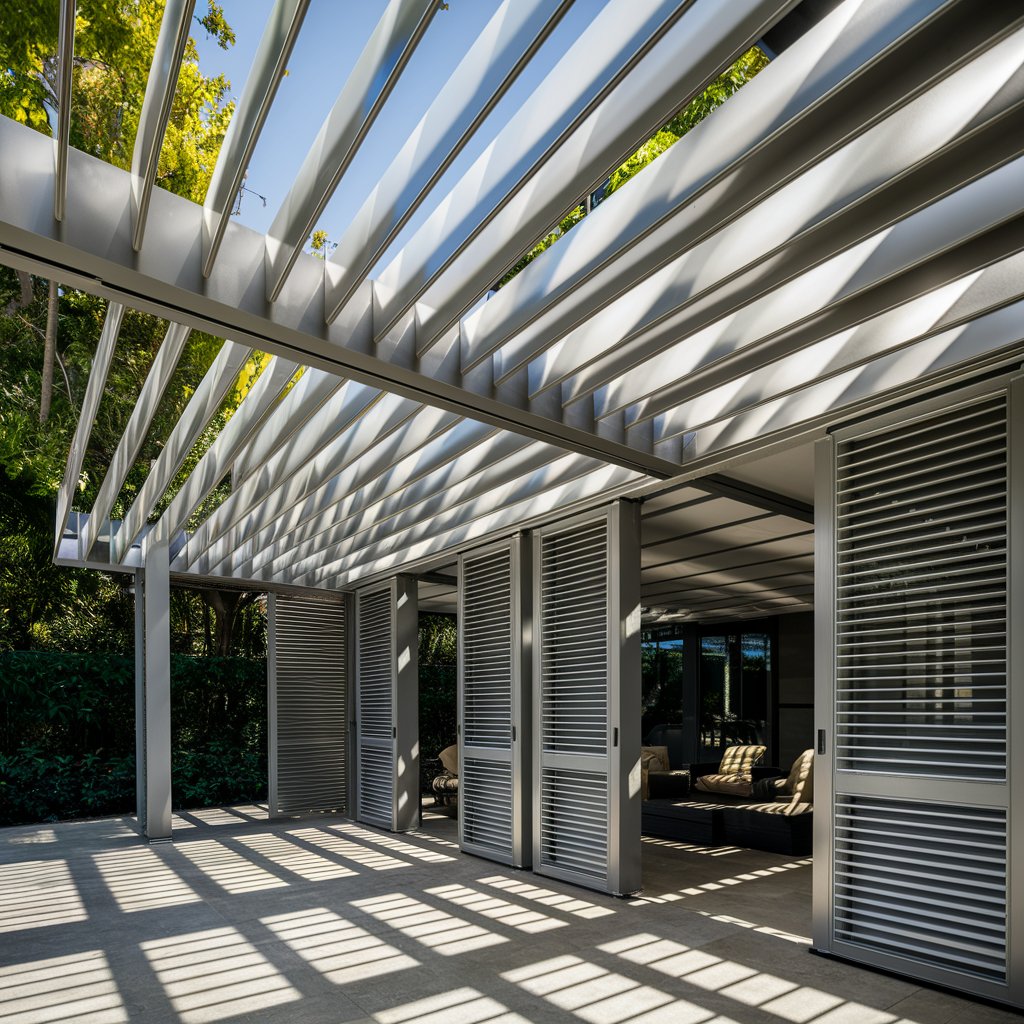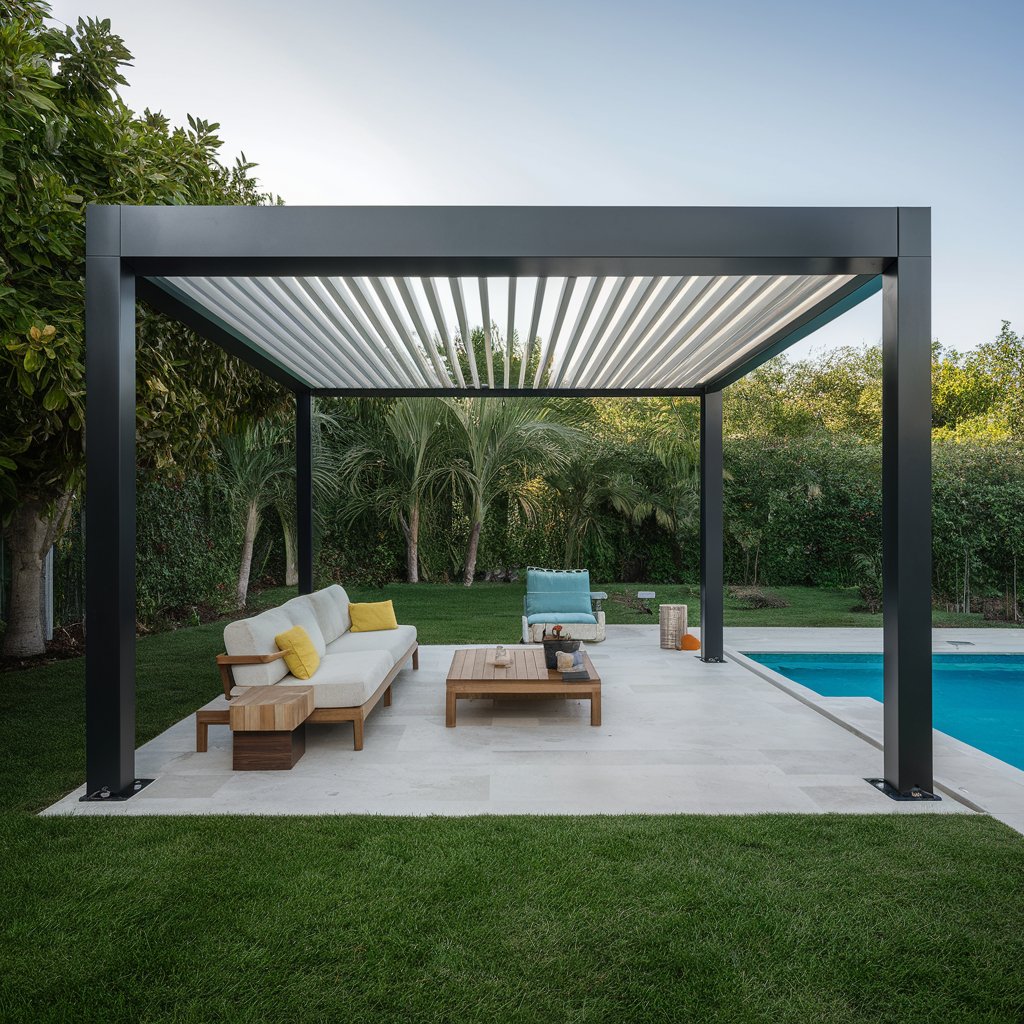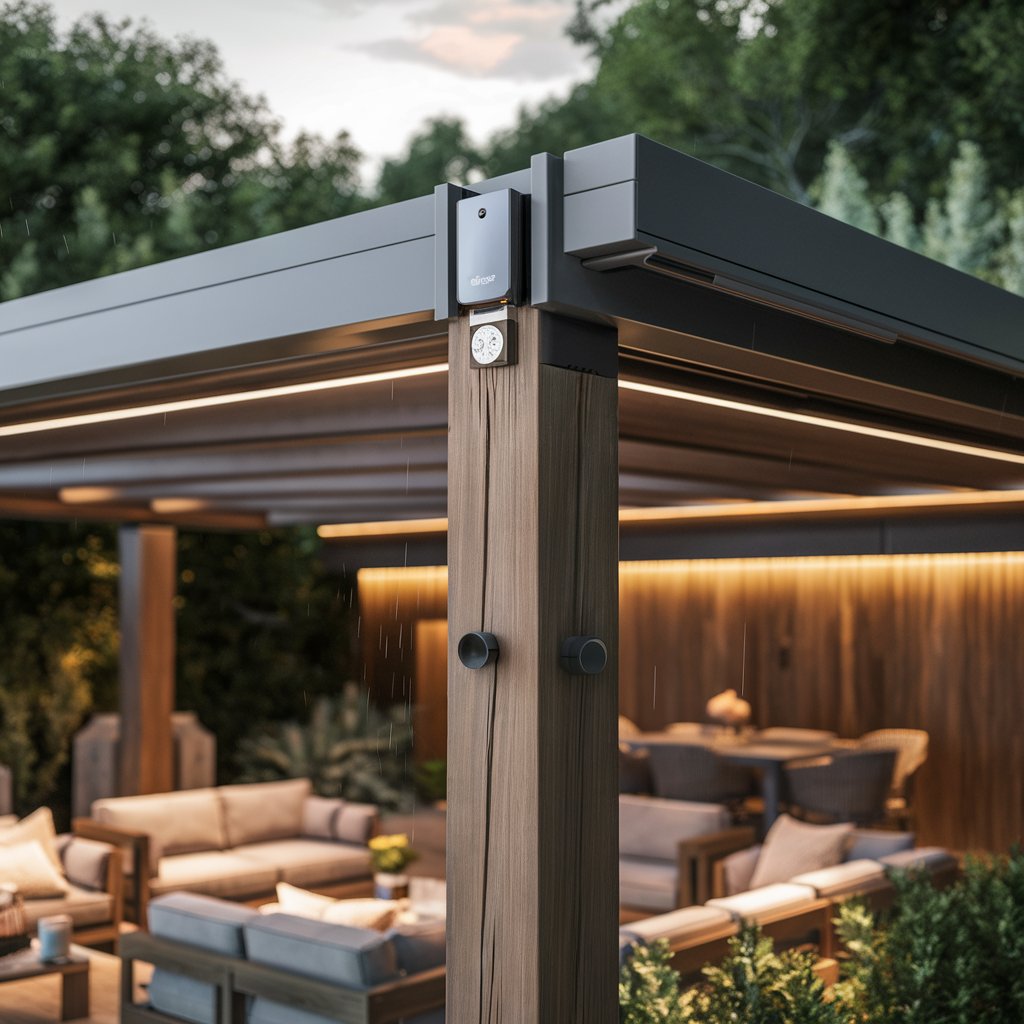Introduction
Retractable roofs represent a marvel of modern engineering, combining functionality and aesthetic appeal to offer versatile solutions for various architectural needs. Primarily found in sports stadiums, arenas, and large public venues, these roofs have revolutionized the way events are held, providing the flexibility to adapt to changing weather conditions and enhancing the overall experience for spectators. This comprehensive exploration delves into the history, design, functionality, benefits, types, and future prospects of retractable roofs, offering a detailed understanding of their significance in contemporary architecture.

History and Evolution
The concept of retractable roofs is not entirely new. The idea of adjustable coverings dates back to ancient Roman times when large canvas awnings, known as velaria, were used to shade spectators in amphitheaters like the Colosseum. However, the modern iteration of retractable roofs began to take shape in the late 20th century with advancements in materials and engineering.
One of the earliest examples of a modern retractable roof is the Rogers Centre (formerly known as SkyDome) in Toronto, Canada, which opened in 1989. This pioneering design featured a fully retractable roof that could open and close within 20 minutes, setting a precedent for future developments. Since then, technological advancements have enabled the creation of more sophisticated and efficient retractable roofs, leading to their widespread adoption in various high-profile venues worldwide.
Design and Engineering
Designing a retractable roof involves a complex interplay of architecture, engineering, and technology. The primary challenge lies in creating a structure that is both functional and aesthetically pleasing while ensuring durability and ease of operation. Key considerations include the roof’s weight, the mechanism of movement, materials used, and the integration with the existing structure of the building.
Structural Components
- Roof Panels: Typically made of lightweight yet sturdy materials such as steel, aluminum, or advanced composites. The choice of material impacts the roof’s weight, durability, and thermal insulation properties.
- Support Structures: Comprising beams, trusses, and columns, these elements provide the necessary support to hold the roof panels in place and facilitate their movement. High-strength steel and reinforced concrete are commonly used for support structures.
- Mechanism of Movement: Various mechanisms can be employed to facilitate the roof’s movement, including sliding, folding, rolling, and tilting systems. Each mechanism has its unique engineering challenges and advantages, often influenced by the roof’s size and the intended speed of operation.
- Control Systems: Modern retractable roofs are equipped with sophisticated control systems that allow for smooth and precise operation. These systems often include sensors, automated controls, and manual overrides to ensure safety and reliability.
Types of Retractable Roofs
There are several types of retractable roofs, each suited to different architectural requirements and aesthetic preferences. The most common types include:
- Sliding Roofs: These roofs consist of panels that slide horizontally to open or close. Sliding roofs are popular in sports stadiums due to their simplicity and effectiveness. For instance, the roof of the NRG Stadium in Houston, Texas, slides along tracks to provide a clear opening above the field.
- Folding Roofs: Folding roofs are composed of sections that fold into one another as they retract. This type is often used in venues with limited space for horizontal movement. An example is the Millennium Stadium in Cardiff, Wales, where the roof folds neatly to reveal the sky above.
- Rolling Roofs: In rolling roofs, the panels roll up like a scroll or blind. This mechanism is less common but offers a unique visual appeal. The Friends Arena in Stockholm, Sweden, features a rolling roof that creates a dynamic and dramatic opening.
- Louvered Roofs: These roofs are made up of adjustable slats that can be tilted open or closed. Louvered roofs offer precise control over sunlight and ventilation, making them ideal for venues requiring flexible shading solutions. An example is the Marlins Park in Miami, Florida, which uses louvered sections to regulate light and air flow.
Benefits of Retractable Roofs
Retractable roofs offer numerous benefits that make them an attractive option for modern architecture. These benefits can be categorized into functional, economic, and experiential advantages.
Functional Benefits
- Weather Adaptability: Retractable roofs provide the flexibility to host events regardless of weather conditions. Whether it’s shielding spectators from rain, providing shade on hot days, or allowing natural light and ventilation, these roofs enhance the usability of a venue throughout the year.
- Energy Efficiency: By controlling the amount of sunlight and ventilation entering the building, retractable roofs can contribute to significant energy savings. During sunny days, the roof can be opened to reduce the need for artificial lighting, while on cold days, closing the roof helps retain heat, reducing heating costs.
- Versatility: Retractable roofs transform venues into multi-functional spaces. A stadium with a retractable roof can host sports events, concerts, trade shows, and other gatherings, maximizing its utility and revenue potential.
Economic Benefits
- Increased Revenue: The ability to host events year-round, regardless of weather, leads to increased revenue opportunities. Venues with retractable roofs can attract a wider range of events, ensuring a steady stream of income.
- Enhanced Property Value: Buildings equipped with retractable roofs often enjoy higher property values due to their advanced design and increased functionality. This makes them a worthwhile investment for owners and developers.
- Cost Savings: Although the initial investment in a retractable roof can be high, the long-term savings in energy costs and increased revenue potential can offset the expenditure. Additionally, the durability and low maintenance requirements of modern retractable roofs contribute to cost savings over time.
Experiential Benefits
- Enhanced Spectator Experience: Retractable roofs offer an unparalleled experience for spectators. The ability to open the roof for an outdoor ambiance or close it for comfort and protection ensures a pleasant experience for attendees, enhancing their overall satisfaction.
- Improved Acoustics: For concert venues, retractable roofs can improve acoustics by creating a controlled environment. When closed, the roof helps contain sound, providing better audio quality for performances.
- Architectural Appeal: Retractable roofs add a dynamic and visually striking element to buildings. The ability to transform the roof creates a sense of drama and excitement, making the venue a landmark attraction.
Case Studies
To understand the practical application and impact of retractable roofs, it is beneficial to examine some prominent examples from around the world.
Mercedes-Benz Stadium, Atlanta, Georgia
The Mercedes-Benz Stadium is renowned for its innovative retractable roof design. Opened in 2017, the stadium features a unique “pinwheel” roof consisting of eight triangular panels that retract simultaneously to create a circular opening. This design not only provides a stunning visual effect but also allows for rapid opening and closing, taking approximately 12 minutes to fully operate.
The stadium hosts a variety of events, including NFL games, soccer matches, concerts, and large-scale conventions. The retractable roof has significantly enhanced the versatility of the venue, allowing it to accommodate diverse events and providing an optimal experience for attendees.
AT&T Stadium, Arlington, Texas
Opened in 2009, AT&T Stadium is another prime example of a retractable roof stadium. The roof consists of two massive panels that slide horizontally along tracks, taking about 12 minutes to open or close. The design allows for a clear, unobstructed opening, providing an open-air experience when desired.
AT&T Stadium, home to the Dallas Cowboys, is one of the largest stadiums in the NFL and has hosted numerous high-profile events, including Super Bowl XLV, the NCAA Final Four, and major concerts. The retractable roof has played a crucial role in making the stadium a premier destination for a wide range of events.
Arthur Ashe Stadium, New York
Arthur Ashe Stadium, the main venue for the US Open tennis tournament, features a retractable roof that addresses the challenge of weather disruptions. Completed in 2016, the roof consists of two panels that slide horizontally to cover the stadium in approximately five minutes. This ensures that matches can continue without interruption, providing a reliable schedule for players and spectators.
The retractable roof has enhanced the spectator experience by eliminating rain delays and allowing matches to proceed smoothly. It has also increased the tournament’s appeal to broadcasters and sponsors, contributing to the event’s overall success.
Challenges and Considerations
Despite the numerous benefits, the implementation of retractable roofs presents several challenges and considerations that must be addressed during the design and construction phases.
High Initial Costs
The construction of a retractable roof involves significant financial investment. The cost includes not only the materials and labor but also the advanced engineering and technology required to ensure smooth operation. This initial expense can be a barrier for many projects, particularly in smaller markets or for less financially robust organizations.
Complex Engineering
The engineering complexity of retractable roofs cannot be understated. Ensuring structural integrity while allowing for movement requires precise calculations and the integration of various mechanical and control systems. Any miscalculation can lead to operational issues, leaks, or even structural failures, necessitating rigorous testing and quality assurance.
Maintenance Requirements
Retractable roofs require regular maintenance to ensure they function correctly and safely. This includes routine inspections of the mechanical systems, lubrication of moving parts, and checks for wear and tear on materials. Neglecting maintenance can lead to malfunctions and costly repairs, emphasizing the importance of a proactive maintenance schedule.
Environmental Impact
While retractable roofs offer energy efficiency benefits, their construction and operation can have environmental impacts. The materials used, the energy consumed during operation, and the long-term sustainability of the roof’s components must be considered. Incorporating sustainable practices and materials can mitigate some of these impacts.
Future Prospects
The future of retractable roofs looks promising, with ongoing advancements in technology and materials paving the way for even more innovative designs. Key trends and developments include:
Smart Technology Integration
The integration of smart technology into retractable roofs is an emerging trend. This includes the use of sensors and automated systems to monitor weather conditions and adjust the roof’s position accordingly. For example, rain sensors can automatically close the roof at the first sign of precipitation, while temperature sensors can adjust the roof to optimize indoor climate control.
Sustainable Materials
As sustainability becomes increasingly important in architecture, the use of eco-friendly materials in retractable roof construction is gaining traction. Advanced composites, recycled materials, and energy-efficient components are being incorporated to reduce the environmental footprint of these structures.
Enhanced Aesthetics
Future designs of retractable roofs are likely to place a greater emphasis on aesthetics, creating visually stunning structures that serve as architectural landmarks. Innovative shapes, dynamic lighting, and artistic elements can transform retractable roofs into focal points of urban design.
Broader Applications
While currently most common in sports and large public venues, retractable roofs are likely to see broader applications in the future. Residential buildings, commercial spaces, and smaller-scale venues may adopt retractable roofs to enhance functionality and appeal. This expansion into new markets will drive further innovation and accessibility of the technology.
Conclusion
Retractable roofs have undeniably transformed modern architecture, offering a blend of functionality, aesthetic appeal, and versatility. From their historical roots to contemporary applications, these structures exemplify the advancements in engineering and design that enable buildings to adapt to changing conditions and enhance user experience. As technology continues to evolve, retractable roofs will likely become even more sophisticated, sustainable, and widely used, cementing their place as a crucial component of future architectural endeavors.
4o


